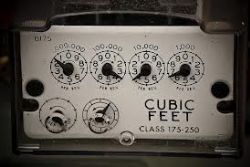
After having bought a property in need of a little care and attention, many new owners find that the electricity supply is not suitable for their requirements. The modern-day preference for electrical appliances and gadgetry, compared with days gone by also means that many new owners of Spanish property therefore need to upgrade their electricity supply.
Tumbit asked Tony Poole from Sparks Electrical Services to tell us how consumers should go about arranging such an upgrade :
”Upgrading an electricity supply in Spain is required when you need more power than you are currently contracted for with your electricity supplier. This is evident when the electricity supply constantly cuts off when using electrical appliances. This is caused by having too many switched on at the same time, and produces an overload to the system. It indicates that the amount of electrical power required to work all of the appliances is insufficient for your consumption needs. Hence you need to upgrade the electrical installation in order for your supplier to allow an increase to the contracted power supply.
Your contracted power supply (potencia contratada) is stated in kilowatts (kW) on your contract and should be clearly stated on your electricity bill. This is the amount of electrical power that you sign up for when moving in to the property. It is the maximum amount of electrical power you are allowed under the terms and conditions of your contract. A standing charge for the contracted power supply is calculated by the contracted power supply x the daily supply rate. The more power that you are contracted for, the higher the standing charge will be.
The contracted power supply is controlled by a power limiter switch called an ICP (Interrupter de Control de Potencia) . Failure to comply and fit an ICP, if instructed to do so by your provider, will result in a penalty charge on your electricity bill. Currently there are 3 types of ICPs for residential properties in operation:
1.) ICP(A) – old automatic type, housed in the meter cupboard (discontinued)
2.) ICP(M) – manual type, housed in, or next to, the Consumer Unit (current)
3.) ICP(A) – automatic type, integral part of the new digital Smart Meter (new)
Smart Meters will replace the traditional electric meters all across Spain by the end of 2018. They are fitted with an integral ICP (Interrupter de Control de Potencia) , which will supercede the old ICP(A) and ICP(M), making them redundant. A possible consequence of having a Smart Meter fitted may result in owners having to arrange an upgrade to the electricity supply. The introduction of Smart Meters prevents the malpractice of illegal upgrades.
An illegal upgrade is one where the ICP has been subject to tampering. It will have been disconnected, by-passed or changed without the authorisation of your supplier, normally evident by the seal being removed or tampered with on the ICP box, next to, or part of, the Consumer Unit. To legally upgrade an electricity supply an electrician must be employed to supply a BIE aka boletin (electrical installation certificate), which must be forwarded to your supplier in order to arrange a new contract for an increased power supply.
New homes built after 2003 are generally provided with a 5.5 kW or 5.75 kW (25 Amps) contracted power supply on completion, which is generally a sufficient amount of electrical power for running an average home. This is arranged by the developer, and it is currently the minimum requirement by regulation for a domestic dwelling. If an owner requires additional electrical power, then the onus is on them to arrange an upgrade.
Homes built before 2003 had a minimum requirement of 3.3 kW (15 Amps), and are generally those which need to upgrade their electricity supply. This was the minimum amount developers were obligated to provide before the current regulation, and again, it would be up to the owner to arrange a power supply upgrade if required. This low amount of contracted power can cause a lot of overloading problems with the ever increasing demand of new electrical appliances. To give you a better idea of the problem, a 15 Amp electricity supply is 75% less than the standard 60 Amp electricity supply you would receive in a UK home. It’s not uncommon for old properties in rural areas to have a 2.2 kW, a 1.5 kW, or even a 1.0 kW contracted supply. Running a modern day home in Spain with only 3.3 kW or less electric power available is practically impossible, and those who do, have to supplement gas appliances for cooking, heating and the production of hot water.
A legal contracted power supply for an electrical installation is one where the rating of the ICP(M) or ICP(A) does not exceed the amount stated on the contract. For an installation where a Smart Meter is fitted, the legal process for contracted power is done automatically.
If you currently still have the traditional electric meter and are on a contracted supply of 3.3 kW or less, you should evaluate your electricity consumption to consider whether or not to upgrade your electricity supply in the near future. The automatic ICP (Interrupter de Control de Potencia) in a Smart Meter, operates digitally with zero tolerance, unlike the IPA(M). Once your Smart Meter is fitted, you may find out that you are not contracted for sufficient electrical power to run all of your appliances.
Warning : Do not allow unqualified persons to upgrade Circuit Breakers. Only a trained professional will understand the correct circumstances when a Circuit Breaker can be upgraded. Insurance companies will not cover claims for an electrical fire proven to be caused by an illegal upgrade. An authorised upgrade must be covered by a valid boletin.










